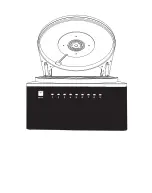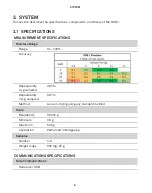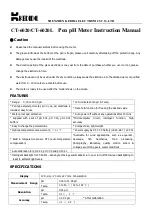
13
ROS 1
0.025
0.02
0.015
0.01
0.005
0
0
1
0.5
1.5
Oven Vapor Pressure (kPA)
2.5
2
3
Dry Sample Water Activity
Figure 7 Water activity of a dry sample in an oven
This analysis should make several things clear:
1. Dry does not mean there is no more water in the sample.
There is always more water in the sample. The amount of water that is removable by
the drying process depends on the vapor pressure of the air around the sample and the
sample temperature.
2. Anything that alters the oven vapor pressure will alter the dry water activity of the
sample, which, in turn, will alter the dry weight of the sample.
So, increased laboratory humidity or lack of proper oven ventilation will result in an
increase in oven dry weight and a decrease in apparent moisture content.
3. Moisture content measurements will be most accurate if there is a specified dry water
activity and a requirement that drying methods bring samples to that water activity.
The challenge is to find a method that rapidly dries samples to a specified water activity
while minimizing sample oxidation and volatile loss that occurs with heating in an oven.
3.3.3 TEMPERATURE DEPENDENCE OF WATER ACTIVITy
The water activity of all products changes with temperature. Generally, an increase in
temperature results in an increase in water activity. At intermediate water activity, the water
activity change is around 0.003
a
w
per °C. This effect results in additional drying of a typical
product at high temperature compared to drying at lower or room temperature, even if the
high- and low-temperature samples are at the same final water activity. A precise moisture
content measurement, therefore, requires accurate control of both sample temperature and
oven vapor pressure.











































